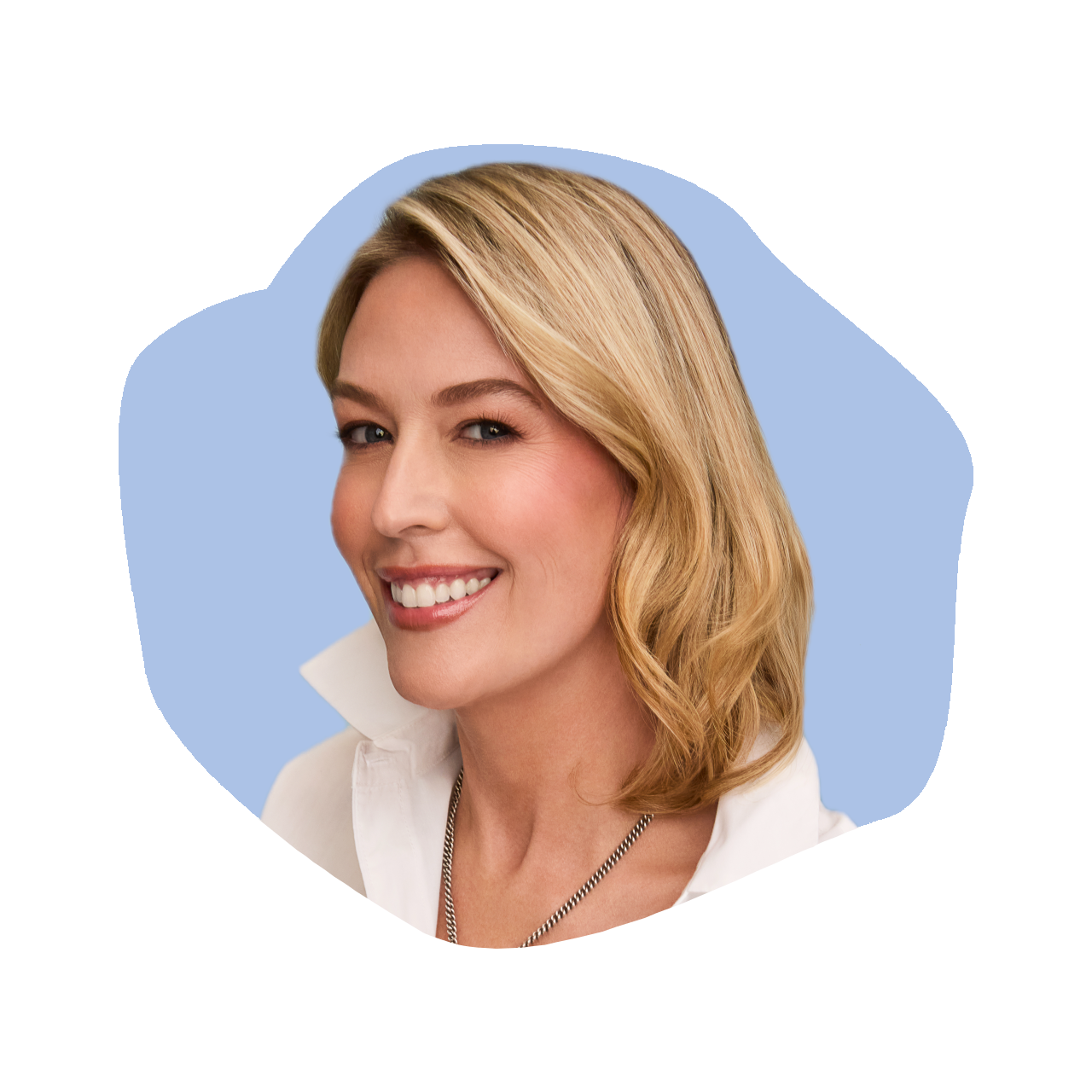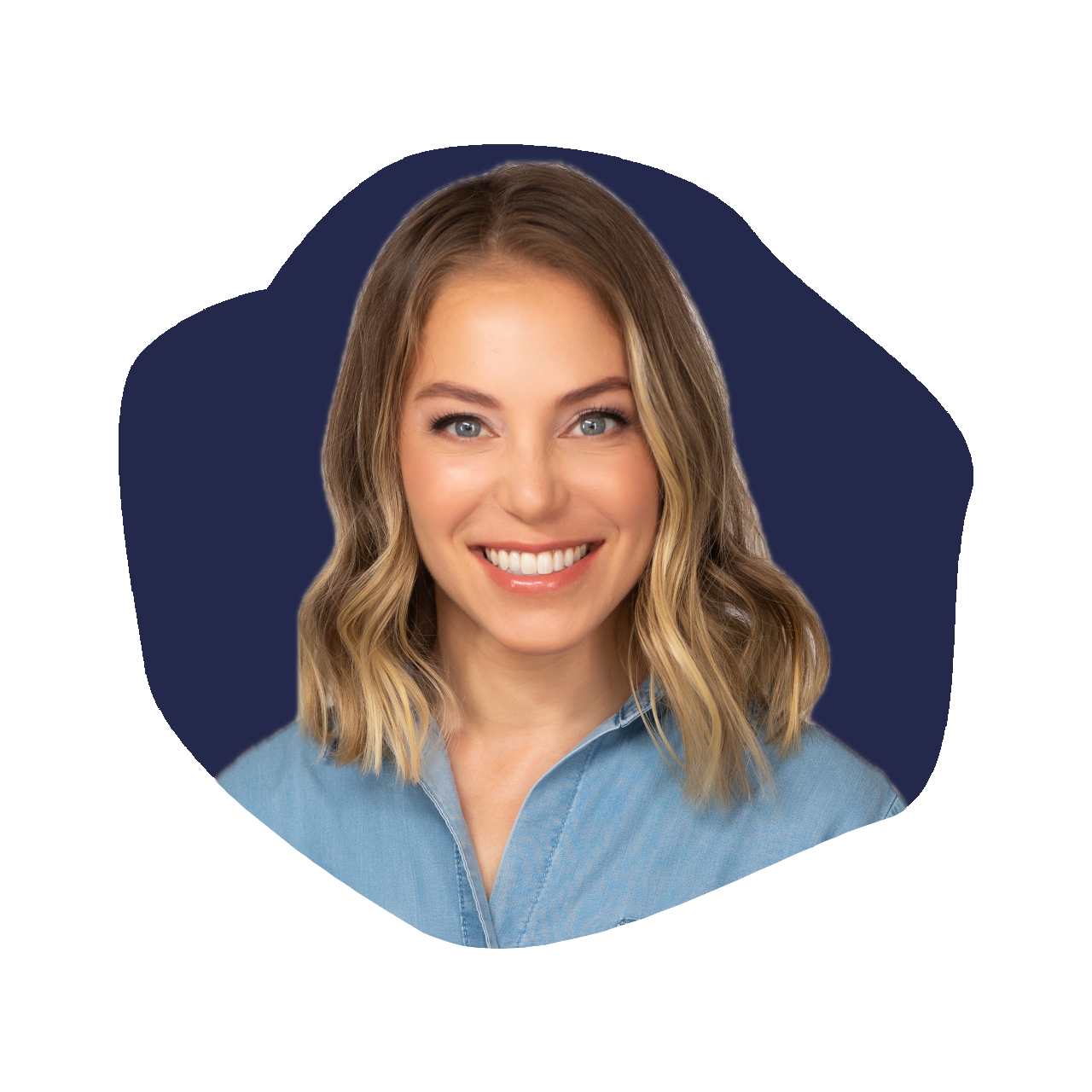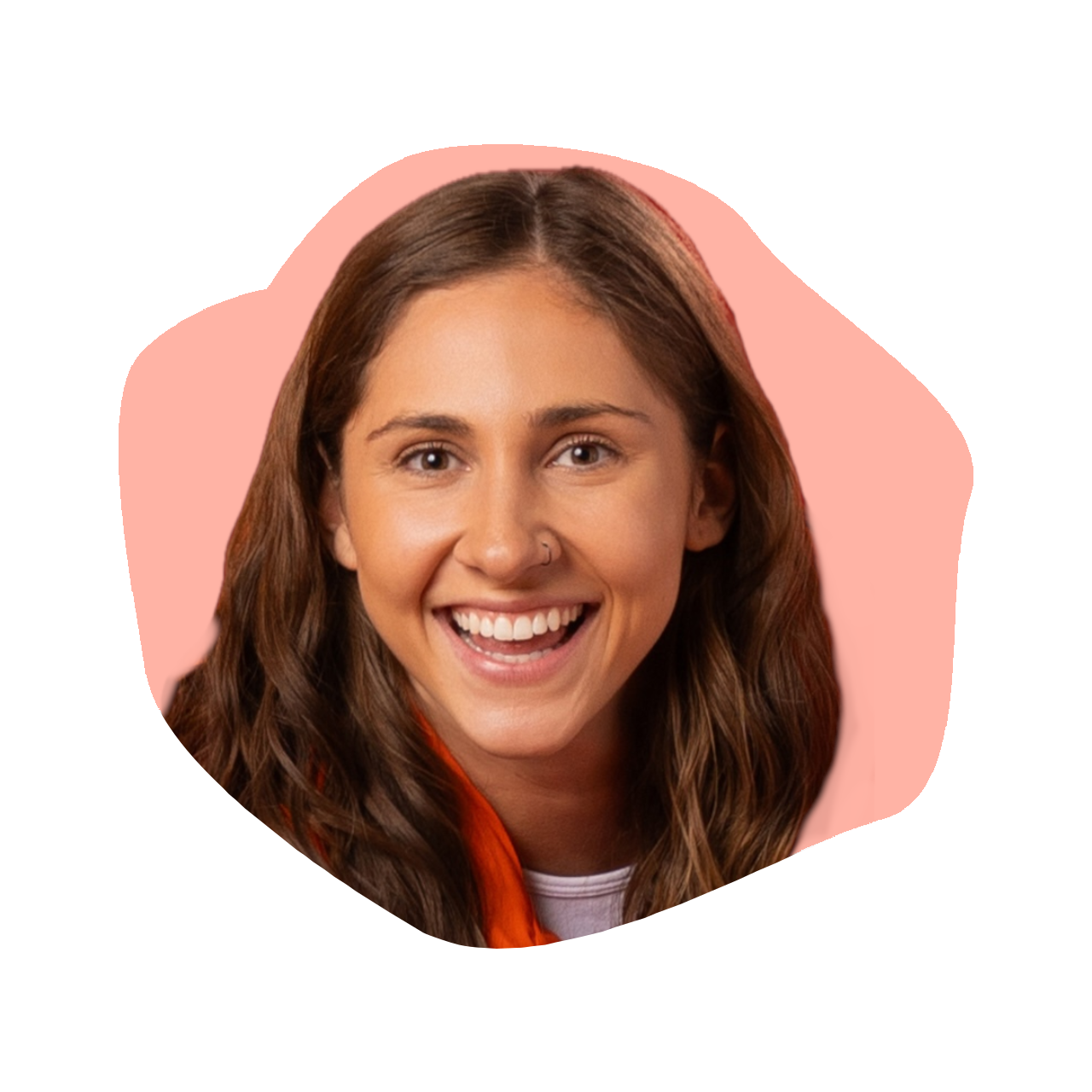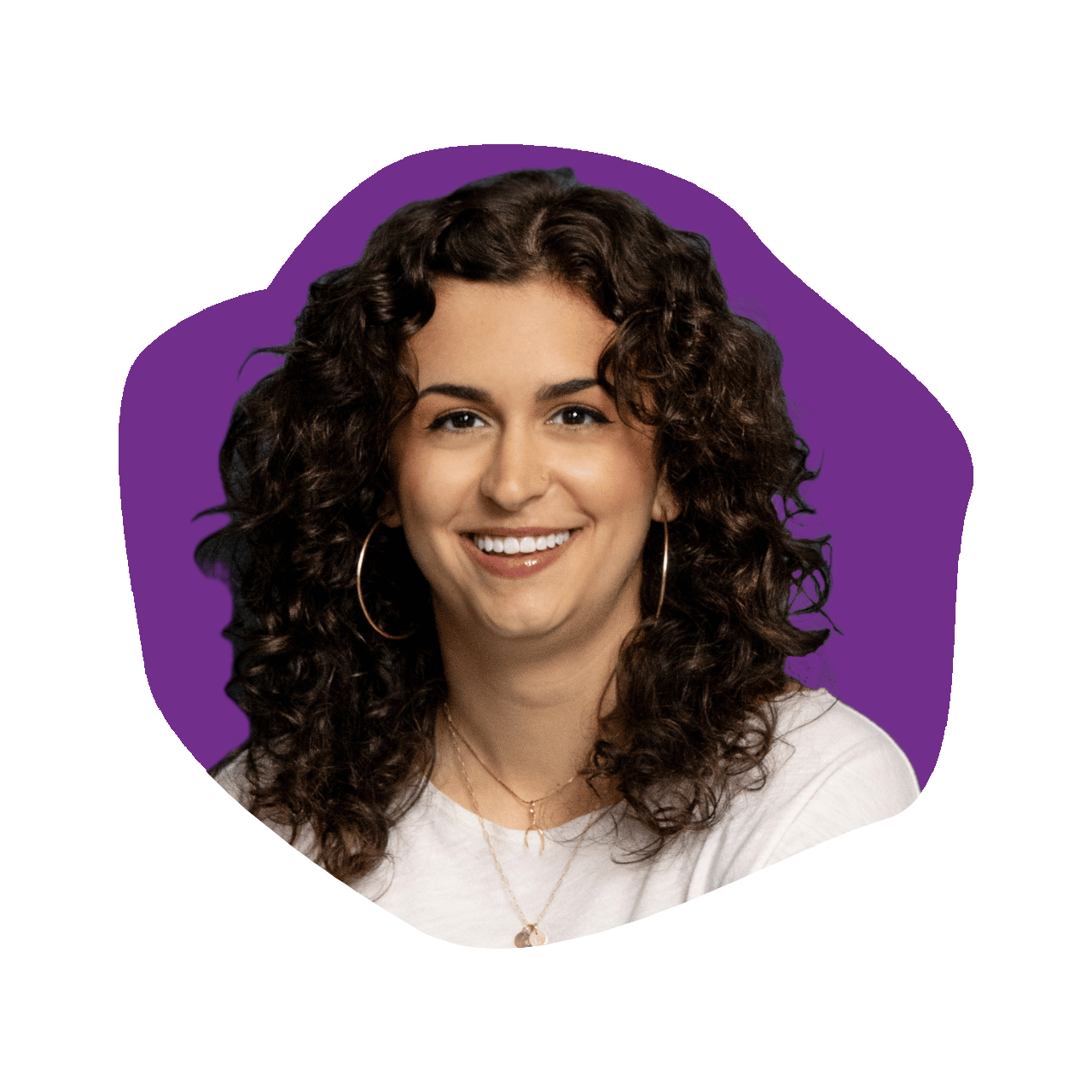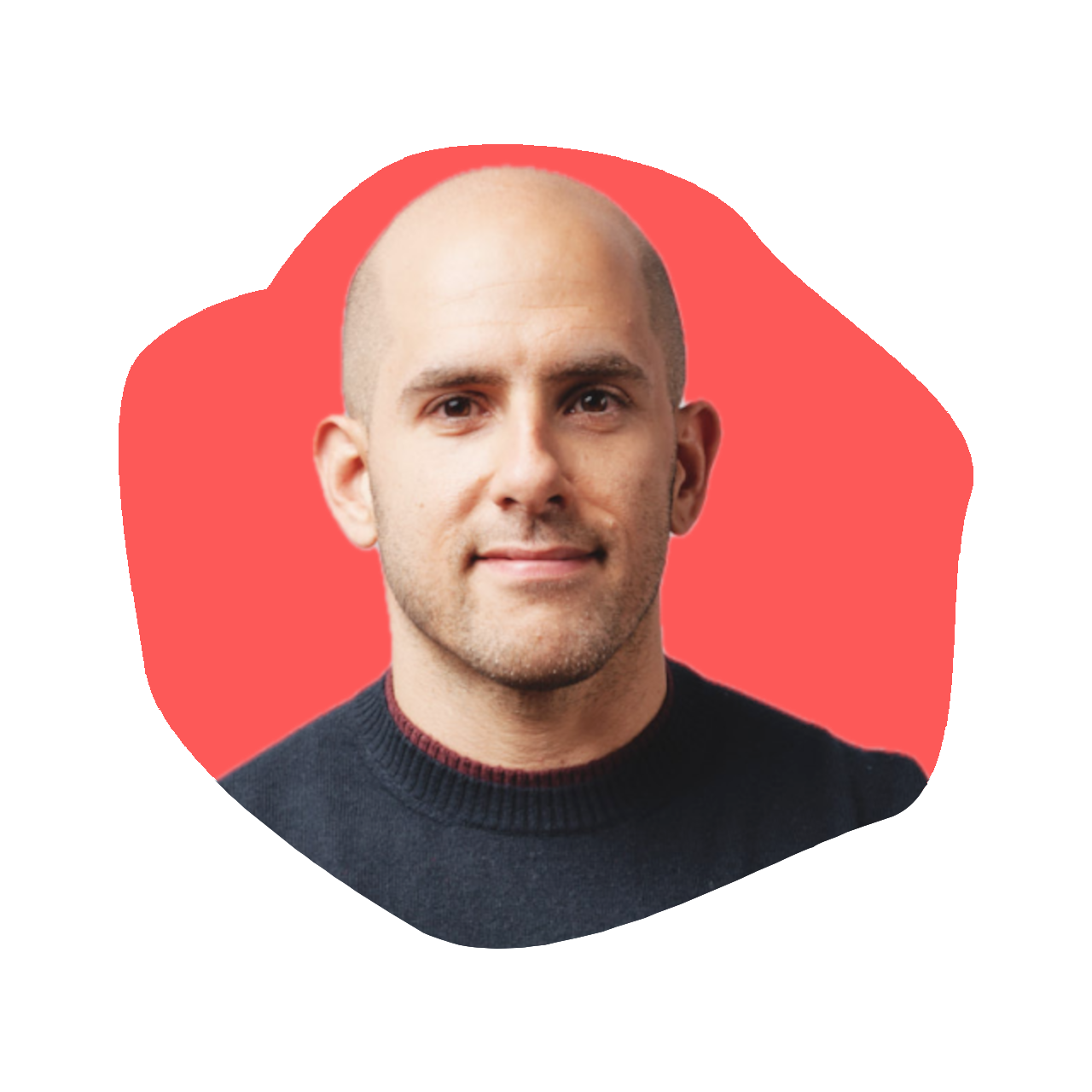Heather Terry: Founder & CEO of GoodSAM Foods
Episode 714
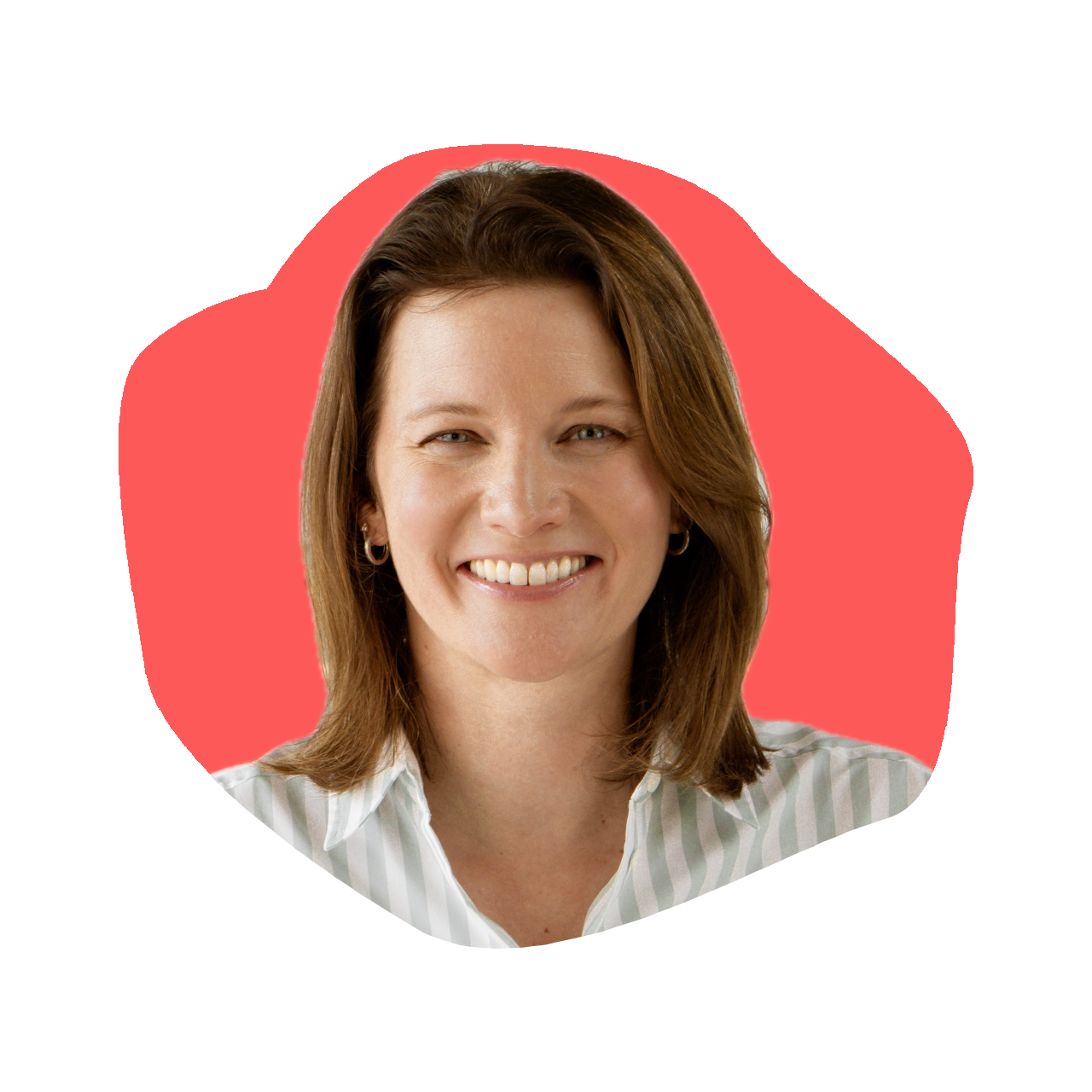
On this episode of The Kara Goldin Show, we’re joined by Heather Terry, Founder and CEO of GoodSAM Foods—the farmer-first snack brand flipping the traditional CPG playbook on its head. With a just-closed $9 million Series A, raised primarily from Latin American investors who understand regenerative agriculture, Heather is proving that it’s possible to scale a values-driven business without compromising your mission.
In our conversation, Heather shares the lessons she learned the hard way about taking misaligned money—and why she’d rather go out of business than do it again. We dive into how she brought investors to the farms to meet smallholder growers face-to-face, why most food investors are missing the point, and how GoodSAM is creating a new model that’s good for people, good for farmers, and good for the planet. From fundraising and transparency to supply chain transformation and climate action, Heather offers a powerful look at what it takes to build a regenerative brand that lasts.
Whether you’re a founder raising capital, a food industry insider, or someone who cares about building a better food system—this episode is packed with insight and inspiration. Now on The Kara Goldin Show.
Resources from
this episode:
Enjoying this episode of #TheKaraGoldinShow? Let Kara know by clicking on the links below and sending her a quick shout-out on social!
Follow Kara on LinkedIn – Instagram – X – Facebook – TikTok – YouTube – Threads
Have a question for Kara about one of our episodes? Reach out to Kara directly at [email protected]
To learn more about Heather Terry and GoodSAM Foods:
https://www.instagram.com/goodsamfoods
https://www.instagram.com/heatherkterry/
https://www.linkedin.com/in/heatherkterry
https://www.linkedin.com/company/goodsamfoods
https://www.goodsamfoods.com/
Transcript
Kara Goldin 0:00
I am unwilling to give up that I will start over from scratch as many times as it takes to get where I want to be. I want to be you. Just want to make sure you will get knocked down. But just make sure you don’t get knocked out, knocked out. So your only choice should be go focus on what you can control. Control. Control. Hi everyone, and welcome to the Kara Goldin show. Join me each week for inspiring conversations with some of the world’s greatest leaders. We’ll talk with founders, entrepreneurs, CEOs and really, some of the most interesting people of our time. Can’t wait to get started. Let’s go. Let’s go. Hi everyone, and welcome back to the Kara Goldin Show. Today, we’re diving into mission driven entrepreneurship, my favorite topic including raising capital without compromise and what it really takes to build a regenerative food system that works. And I’m thrilled to be joined by Heather Terry, who’s a serial entrepreneur or serial founder, and the CEO of an incredible, incredible product and company called GoodSAM foods, which is a farmer first snack brand doing things very differently. So Heather is a serial founder, as I mentioned, who’s experienced the highs and the lows of hard lessons to come with taking the wrong money in certain points, also just being able to see lots of challenges that maybe she didn’t even know that she was going to run into and creating A product before. That’s what I love about serial entrepreneurs. And after learning firsthand how things can really go up and then go down, she’s now scaling GoodSAM with an uncompromising commitment to sustainability, community and transparent supply chain. So like I said, GoodSAM foods is just absolutely incredible. They just fairly recently closed a series, a that I’ll let her talk about, but we’re I’m really, really excited to have her here to talk about her company, her product, and what she’s doing today. So Heather, welcome to the show. So excited to have you here.
Heather Terry 2:21
Thank you for having me. I’m such a big fan of yours, so this is such an honor to be sitting here with you. Seriously, thank you for having me. You’re You’re
Kara Goldin 2:28
so, so sweet. So okay, so let’s talk about GoodSAM. And what exactly is GoodSAM foods.
Heather Terry 2:36
GoodSAM works solely in regeneratively farm systems, directly with farmers in eight different countries, in chocolate, coffee, nuts and fruit. And what’s really different about us is that we build relationships on the ground. We provide technical support different types of resources. But in addition to that, we are using the systems of regeneration, so a lot of our products grow together in those countries, right? So whereas most businesses will go and just take one thing from farmers, which really forces a mono crop or a monoculture, we come and say, Oh, you’ve got chocolate and coffee growing together, we’ll take both, right? So we try to take all the viable cash crop off of these farms, associations and cooperatives that we can and what that really creates Kara is economic viability in some places, even the United States, you know, our farmers in the US still have really quite serious economic challenges. So the food system is very disconnected, and what GoodSAM is here to do is to prove that can work for every stakeholder, from the farmer who plants the seed all the way through, the eater who picks up a package of our product on the other end. So we’re really trying to merge together those connective points, which we’ve really lost, especially in the US Food System.
Kara Goldin 3:54
Yeah, definitely, definitely. How did you come up with this idea?
Heather Terry 3:59
Yeah, it’s, um, so I was, I was a serial entrepreneur. I had a chocolate business that I ended up selling in 2015 and I was consulting for a lot of different businesses. And, you know, I always wanted to do something more in the field. We had traveled in my first company, but we had brokers and a lot of middlemen, and a lot of which we don’t have a GoodSAM we stripped our entire system of that. So these extra hands taking money out of the pockets of farmers and the brand, right, in order to get an equitable product on shelf to the consumer don’t exist in our system. So I, I had been working for a long time, like, pretty much in like, what we would consider an extractive model in natural consumer goods, right? VCs kind of came in in 2010 they were funding a lot of companies, but expecting these massive exits in three to five years, it was not sustainable. It’s an extremely extractive way of running a business. It’s sort of profit and top line at all cost. And I was in that system for a long time, and I had been. Was on the ground with some of the farmers, but it just like, I couldn’t get past a firewall, right? It was like, and I was, what was one of the only women traveling in the field that was like, you kind of couldn’t get past a certain point. And in 2019 I was at a consultancy in New York City working, and I’d been helping brands, you know, kind of put together their financials for capital raising, get focused, get a good channel strategy. I’d been in the business for for a long time, at that point, almost a decade. And, you know, just trying to do my part to help companies do it better. You know, without stepping on the land mines. And a project came across my desk that had direct access to farmers in Columbia, I had never thought to work in Columbia. There’s a lot of stigma around Columbia, and I somehow got convinced by my former business partner, who’s since left the business, to go down there. And I brought one of the members of the team at Thrive Market. We ended up understanding that we had this regenerative system and we had direct access, and there was a real opportunity. It was just of it was timely. It was of the moment, right? We had an opportunity, and we thought, if we could do this, no brokers, no middlemen, working directly with a farmer, prioritizing regeneration, trying to figure out, like, Could we take more than one thing, and really start to drive that economic viability and create a flywheel on the ground. Could we then create a consumer product that could come to the market, obviously always a little bit higher than, like a private label commodity, but essentially, start to really change the game for the brand and the farming community simultaneously, as well as giving the consumer a better than good product, right? And that was what we set out to do, and and it started to work. And so we decided we go further and further and further. And what was really great is that Thrive Market came in really early, and they were really wonderful in helping drive, you know, what products and categories that we came into, and that was really how we got put on the map. That was how GoodSAM came to be. And I resisted, you know, coming into the CEO seat for a while, because, of course, I knew that world quite well, and I resisted it for a long time. But ultimately I realized that, like, if I was going to continue to do this work in my life, that this was the this was the path that I wanted to take, this was the mark that I wanted to leave on the industry, or Kara, I was going to fail spectacularly, like it was going to be one way or another. But if I was going to do it again, then do it big, and do it in a way where we can drive systems change otherwise. Why do
Kara Goldin 7:42
it? Did you have a relationship with Thrive Market before I did?
Heather Terry 7:47
Yeah, so I had a, I had a relationship with them. And, you know, not a really, um, not a really deep one, but when we brought it to the table and we put together the materials, and we got some guidance from some of the folks over there. We just realized we had a really big opportunity, and that, you know, could we, could we grow a brand in that capacity? And it was, you know, we started the company in 2020 the idea sort of came onto my desk in 2019 I was traveling the majority of 2020 during the pandemic, to build the supply network, as we call it. We work at nice that, like I said, eight different countries, and so building that network out was a lot of work, a lot of COVID tests and a lot of special visas to get into countries and places. But, you know, I think we realized that, like, we had an opportunity in 2020 to drive a lot of volume through a system at a time when we couldn’t access brick and mortar retail. I couldn’t walk into Whole Foods and get a placement in 2020 so it was kind of like very synchronistic that it all came together with thrive, and they sort of became the main driver of our business. I it was, it was how we started, and we wouldn’t be here without them. So we’re very grateful to everything that thrive has done for us. For
Speaker 1 8:59
sure, I read that you said, if you’ve never been on a farm, you shouldn’t be in the food business. Can you unpack that a little bit?
Heather Terry 9:08
I know I was so controversial, but it’s true. I think that if you don’t understand the realities on the ground, it’s like trying to build a computer program and not understanding code, right? Like you’d never ask somebody to build you an app or build a computer program or a website for you that doesn’t know code. You never do that. It just like this person doesn’t have the skill set. So for me, it always, it always struck me, you know. And in my first company, nipmore, I did travel, you know, not at the length that I do now, but it also those moments in the early days of my career really scrambled me, because I was like, something’s wrong, like I could intuitively feel that something was wrong, but I felt deeply powerless in terms of how to actually deal with the system. So it took a number of years for me to figure out, like, Okay, if I if I get out there, once we landed on the ground at GoodSAM, and I’ll tell you a funny story. Great. So if you go and read our 2024 impact report, you’ll, you’ll read the story in more depth of of the first time that I got on the ground at Columbia, which was pretty intense. You know, I had been working prior in my career with brokers. And so you show up in a country, they take you the nicest places. They introduce to the farmers that are the happiest. And it’s all a lot of smoke and mirrors, and you can kind of feel it. You know that some things like, not totally right. And sometimes farmers would pull me aside and they would say things to me like, hey, like, what you see is not exactly what’s going on. That was a deep impression on me early in my career, when I went to Columbia for the first time. We were working in a region called to Lima, and we had to fly from Bogota in a propeller plane to the heart of the forest, the jungle, onto a military airstrip. And when we landed, and mind you, I have, like, Thrive Market with me. I’ve got the my original co founder with me. I’ve got a group from Columbia that was helping, like all these people, we get in this propeller plane, and we we hit the we hit the runway, we get out. There are dogs, there are machine guns, there is military. And I am being searched. Our bags are being searched. Everything’s being searched on the ground. That region that we were originally operating in was where the original FARC was operating. And so there was a lot of complication in that place. And that was the first moment for me where I was like, wow, Dorothy, you’re not in Kansas anymore. Like, this is the this is the real thing that you knew was there all of this time, but that you couldn’t see, right? And so that moment was really developmental for me, in that I started to understand that I didn’t have all the answers. I started to understand that the food system was a lot more complex than it’s even painted to founders, right? Because a founder who’s just buying from a broker, from you know, through middlemen, is being fed a story right to make them feel good and to put the right thing on their package. And that had been me for years, but also intuitively knowing that there was a lot more to it, that there were a lot more complications. There’s poverty, you know, we work in Ghana, there’s mass poverty. It is some of the most heart wrenching, heartbreaking stories and people that you will see on the planet, you know, all of these places have stories, and they’re in this deep developmental work that we turn a blind eye to, and then we, you know, complain about the cost of like a pineapple, because we don’t understand it. We don’t understand that a pineapple only grows two pineapples in its lifetime. It takes 18 months to get those two pineapples out. And then we complain when a pineapple is $6 right, but we don’t understand that there’s a guy who’s tending that pineapple for almost two years to get it to you right. And then you think of that $6 and then you think, wow, that pineapple should be a lot more than $6 right? Because we’ve been intentionally taken away from the root of food in the system that we exist in today, which is the grocery store model.
Kara Goldin 13:15
Yeah, no, definitely. And also no child labor and things like that that we exactly, you know, don’t really want to think about, yeah, if
Heather Terry 13:24
people, if people knew, if people really sat with a child labor piece, they’d never buy a mainstream brand of chocolate ever again. Because that’s all that it is in the United States, because we don’t hold that standard like Europe does. It’s very, you know, remember, like every system is complicated. Think about how complex for any of you, your job is your home is raising your kids, is whatever it is, right? People are complicated, so we turn a blind eye to the food system, but when we actually open it a little bit, we understand that it is also extremely complex.
Kara Goldin 13:52
Yeah, definitely. So from the time that you thought this idea up to actually getting your first product. How long did that take? So
Heather Terry 14:04
we started the process in Jan. So because it was like November of 2019 and then we were in the field in January, February, and then after then it was pandemic. So it was November of 2020 that the first product came out. So about a year, about a year from like, the inception of the company to the first product being launched.
Kara Goldin 14:24
So you and then COVID hit, right? And so, oh, it was
Heather Terry 14:28
during COVID. So we’re 2019 COVID hit. We were still driving to a launch point in the middle of the pandemic, and launched it in the pandemic in November of 2020. It’s crazy.
Kara Goldin 14:41
So yeah, so so wild. So you recently, I mentioned this in the intro, but you recently closed a series a congratulations. So you chose Latin American investors. Talk to me about that decision process. Obviously. You’re sourcing from there. So totally makes sense. But I think a lot of people maybe they don’t know that these investors are out there, outside of the US, especially if they’re US company. But how did you how did this all come about?
Heather Terry 15:13
It’s really interesting. So we were going the traditional VCPE routes. I It was miserable. It was just horrible. You know, 20 22,022 was a tough year for capital raising, if we all remember, um, and so there were a lot of, like, locked wallets and bank accounts and all of it, you know, I think a lot of the VCPE world, you know, I think that was like, kind of the first, like, a big first, a big fumble for them. They didn’t they. They had sort of overvalued companies. Prior to 2022 they were dealing with a lot of dumpster fires trying to preserve their portfolios. So it was really hard for a new company to come onto the scene raise money. In addition to that, when we were out there talking to them, you know, they thought I was crazy, there were, like four categories. Are you out of your mind. You’ll never make it. It’s too expensive, it’s too this is all the old stuff, right? Like, I think what’s so interesting about consumer goods, even in the natural products world, is that, like, there’s an old guard that just believes that, because they did it this way, it must be done that way, right? And so there’s been very little innovation in how we raise money and how we collaborate around the world on food systems. But there’s a whole other group of people who are thinking about these food systems on a broader global scale, regardless of what’s happening in a place like the United States and the populist policies that we have here now, we’re a global community. You will be hard pressed to touch anything in your home right now that doesn’t have a foreign component to it, right? Like, it’s just the cat’s out of the bag, toothpaste is out of the tube. Like, I hate to destroy anybody’s like, pipe dream, but like, we’re not going, there’s no way to go back, right? Like, there’s just, there’s no capability. It’ll take decades to really create that environment. So I was a little bit at a dead end. And I also didn’t like, I had some term sheets, bad term sheets. You know, the minute you get a bad term sheet, that’s like, not, you know, I always say to my to my employees and like, what is in the best interest of the company, not what’s in the best interest of Heather, not what’s in the best interest of one investor. What is in the best interest of the company, if we’re all here for the company, what gets this business to the next point? And so when reading those term sheets didn’t get us to the next point, it was just a it was a takeover strategy, right? Like, oh, hey, they need money, and nobody else will give it to them, so we’ll give them this term sheet. That’s really crappy. Luckily, I’ve been in that scenario, right? I’ve taken bad money in the past. I’ve had bad partners, I’ve had bad actors. I’ve had people do all kinds of crazy things in my career. And I just said, No. I just said, No, I would rather fail and close the doors of this business than take the wrong money after everything that we’ve built and stand for. So I was at that inflection point, and then I went to a conference called SOCAP. And so cap is an investor conference with investors from all over the world, and very impact focused, mission and impact focused. I had no idea what I was getting myself into. I was on a panel. I was there to meet people and to see what would happen. But I had no I did not know a soul. Kara in this environment, right? Like I thought of the best, actually, natural CPG, like, it’s a VCP strategy. I know all the guys. I know all the players, right? Like, you know that whole, that whole thing, and I walked in there like deer in headlights, and I got in an elevator with an American who spoke perfect Spanish, a guy named Greg Krupa, who literally changed the complete trajectory of how we were going to raise capital moving forward. He introduced me to everybody he knew. He seemed to know everybody. He’s guy from Chicago. I’m from Chicago. We, we bonded over that. He started introducing me to everybody. We exchanged phone numbers, and then three months later, he called me and said, Hey, I’m winding down my NGO in Ecuador. I think I can help you raise this money. I really believe that I’m the guy who can help you do it. I think I have the network. I think I can help you. Let me come work for GoodSAM and let me help you raise this money. It was Greg who opened up those doors. He got me in every room with every major impact investor that he could find, get a connection to, and, wow. What a different world. Kara, like, what a different world. You know, these are people who are looking for seven to 10 year exits. And they’re not looking for necessarily, uh, acquisition, right? They’re looking for, like, just, oh, hey, we’re gonna, we’re gonna sell to somebody who can, who has deeper pockets, who can fund the business further? Who can, you know, grow with you guys. They’re deeply connected to the work on the ground. They are extraordinarily pragmatic, very numbers focused, but also extremely pragmatic, right? Like it the world of being an impact was just so I felt like I was in. In Alice in Wonderland, I was like, I’m in a different place, like, this is not, this is not what I’m used to, right? This is very different. And I also think, because of the nature of the work and the respect that those investors have for the work on the ground, because they really do understand, right, that when you’re on the ground, you view the world through a lens that others cannot right it again. It you can see the complexity. So it’s you, I don’t Kara, you probably know this because you raised money when you’re hit. But like you walk into the room those VCs, and they make you feel about that big. They make you feel like you don’t know what you’re doing. They know what they’re doing. They’re going to be here to tell you what to do. And instead, what I was met with was everybody saying, No, you’re, you are. I’m looking at you. I’m here to be a part of this. I’m here to buy into your vision. I’m here to support what work we’re trying to do to change something that was a very different world. And it’s very funny, because, you know, a lot of my my CPG friends from from years and years have now come to me and be like, can I raise impact money? I’m like, Well, what do you do? You know, some of them don’t have it, and because they’ve seen what’s happened at GoodSAM, and they’ve seen that support and how we’ve been able to navigate it, and it’s just like, it’s so unfortunate to see that disparity, right and understand that there are still so many who are stuck in this system that’s just really extractive and hierarchical and not not fun for founders, not the reason they ever started a business, right? And so I think I’m deeply grateful for that having happened, because we just wouldn’t be sitting here. I would have closed. I would have just said, No, I’m not going to do this. But I’m in awe every day of our investors, because they they’re really they hold my feet to the fire, but they are their true team players.
Kara Goldin 21:53
I love that. So how many SKUs did you actually launch with?
Heather Terry 21:59
We launched primarily, gosh, I remember how we did this. It was chocolate first it was followed by a handful of nuts after that, and then we moved into coffee. And so chocolate, I think we did four chocolate bars. Four chocolate bars. When we started, we did macadamia nuts first, to see if we had something in that market. And, yeah, so it must have been seven to 10 SKUs originally that we came out with, and then we just kept adding on from there database, right? What does the market want? What commodities are selling? What are people really looking for? What are the complaints? Can we do it better? Can we, you know, get people to buy something that is a higher quality with better ethics, that they can talk about when they you know, sprinkle it on their yogurt or put it on a circuitry board.
Kara Goldin 22:50
I love it. So when you think about figuring out if a skew is working, I mean, this is always a question that I get from especially new founders, how do you determine that something is just not working and we should move on, because sometimes it’s the audience that you’re actually selling to. Maybe you’re in a retailer that is just not giving you the shelf space, or doesn’t really have those consumers coming in, or maybe you really haven’t been able to have the right creative or you haven’t figured out the algorithm online, or the relationship with Amazon, or whatever it is. But how do you know that this is a product askew that you should shelve, cancel, continue to grow? How do you look at something and say, okay, we can do this or this.
Heather Terry 23:46
Yeah, I mean, it is really hard to kill one of your food babies. You know, it’s like, it’s really hard to kill them because you’re emotionally attached to it, especially in the early days, right? Like it’s just a tough thing to do. But I mean, look, ultimately, for me, as my career has gone on, you can’t get attached too attached to anything. I think when velocity is not there, you’re getting a pretty clear answer that it’s either a wrong retailer or a wrong product fit. We just pulled out of a major retailer with a product line because the velocity wasn’t there, but the velocity is there in other retailers. So we know it’s the customer right. We know it’s the it’s not a good customer fit. And so a lot of people were really surprised that we pulled out of that retailer with such a big product line. But we just were like, look, these numbers don’t work for us. Like we’re constantly promoting we’re losing money. It doesn’t make sense. I think it’s the fear for a lot of founders that the next thing won’t come that, like, either the hero skew won’t do what you think it’s going to do and you’re going to fail, or it’s the pride of like, I got into that retailer though, like, shouldn’t I stick it out no matter what? But like, at the end of the day, it’s black and white numbers on a page, right? You have to make good decisions. You’ve got to, especially in this day and age and in the environment that we’re in, you’ve got to make every decision based on. The profitability of your business, of getting to profitability so that you can choose your own adventure. You know, that was the thing that like for us at GoodSAM like, we’ve had to make really, really hard decisions about OPEX and personnel and working with different people on the ground, because if we don’t survive, then there is no company, right? And I think 10 years ago, there was a little bit more of an appetite to, like, burn a lot of cash, but I just don’t think that the landscape allows for it anymore. And we all have to be very aware of where the dollars are going and what they’re yielding in return to the business. Because, again, we’re and Kara. We’re not a charity, right? Like we do the mission work that we do on the ground, but even our farmers know, if the product isn’t selling, there will be no resources, right? So it’s like, make those hard decisions and come up with creative ways to compensate or to reorganize around them, because you’re fighting for your life out there. Like, see, like consumer goods is not an easy business. The margins are razor thin. Everybody’s taking money from you. It’s hard, so make the tough decisions early and fast and with clarity. That is, you know that that is the best advice I can give to people like, you know, in your gut, as a founder, when something isn’t working, when you’re looking at that line in your P, L, and you’re like, really, spend too much money there, go kill it, right? Like or reorganize it, because it could be the sword you die on. Yeah,
Kara Goldin 26:27
definitely. What have you been most surprised about, outside of how you’ve been able to raise capital in this go around. But what else have you been most surprised about? Maybe that has changed with the times. I mean, definitely profitability is so much more important today than maybe it was five years ago. But what do you think is kind of surprising today? I had one actually really, really interesting. I had a beauty brand on that is a old school like almost 30 years old beauty brand, and they have a seaweed product, and how seaweed has just like, they’ve really focused on that in Tiktok stores, and so they have completely revised lines that were just like, they kept amazing. They had a good following, but it definitely wasn’t one of their largest SKUs. And then all of a sudden, with Tiktok stores, it’s gone crazy with Gen Z, and so there’s been, like, all these, like, little surprising things that have happened for so many different brands that we’ve had on the show that I’ve been really amazed by. But have you seen anything that is, you know, pretty surprising. I
Heather Terry 27:38
think one of the things that still surprises me on the investment side, Kara, like, I’ll just, I’ll pick from there. And then, of course, there are things that surprise me on the on the brand and the consumer side. But what surprises me the most on the investor side is the desire to still invest in trends. I I’m always blown away by that. I’m like, why it’s a trend? It’ll go away. Like, you’re, you’re setting yourself to blow up, right? Like it just, it doesn’t. It doesn’t make any sense to me, you know, I, I remember when it before I was with the impact investors, I was still, you know, really, in that hamster wheel of VC and PE, of being like, but don’t you care that it survives and that it makes money and that it is a healthy business. No, they still don’t care. And that just blows my mind, that that they haven’t figured out yet, that, like, oh, wait, maybe instead of, like, investing in all these trends or all these things we think might do something, what if we invested in, like, really healthy businesses with, like, a lot of diversity and a lot of protection and a lot of resilience? It shocks me, still to this day that investors just want that sexy, cool fast car, right? Like, I it just, and maybe that’s why so many men are in that business, because they just want that sexy, cool fast car, right? And I, and I’m like, yeah, no, I’m a slow, dependable hybrid, like and I’m gonna make you a lot of money. So it’s not sexy and cool, but I am reliable, and I’ll be here for the next 20 years, right? Well,
Kara Goldin 29:09
I was gonna say, and I mean, that parlays nicely into even trends in products. So it’s not to say that you don’t do anything new, but when right, you’re going and trying to do all these new products, and maybe they’re not really the core part of the business totally, and all of a sudden you’re trying to make those things work. You’re going after different markets. All that money that you put into creating this new line or innovation, unless you back it up with marketing to actually tell this consumer that you’re doing something it’s going to fail, and especially when it’s under the brand that they know. And so why didn’t you take that money and put it into something that’s working, that is continuing to grow? I. Mean, it’s a, you know, this is time and time again. We’ve seen this in many companies, and sadly, I think private equity is famous for pulling that, and so famous for pulling that. So that’s a, that’s another podcast that’ll be my, my, I don’t know what it’s called, I’ll start an entirely new podcast on on that topic. It would be awesome. So,
Heather Terry 30:27
yeah, I was just gonna say the other thing that really surprises me is how slow consumers have been to want to look under the hood. You know, I feel like we’re in the age of transparency, and I’m a little surprised with how slow we’ve been to expose, like, what’s really going on underneath, but I think we’re getting there. So I’d like it to happen a lot faster. I’d like people to understand regenerative, AG, much better. I’d like people to understand the injustices and the disparity inequality that happens in the agricultural community around the world, including in the United States, with farmers. I’d love for people to care more about that and and I think it’s central to our humanity to understand that, you know, we’re in a, we’re in a real, a real difficult juncture in America in particular, which is that, you know, we’re going, I feel very strong. We’re going from a very me centric society to trying to get to we with Gen Z and Gen alpha, and we’re holding on with, like our cold, dead fingers onto our own individual desires and wants. And I think it’s going to be ugly until we get there. It’s going to be hard, but I wish we’d get there faster.
Kara Goldin 31:41
Yeah, yeah, definitely. So what’s the one thing you want people to remember about GoodSAM after hearing your this conversation, obviously, they’re going to go and purchase it and try it, if they haven’t already, continue to try other products that you’re doing. But what’s the one thing that you want people to remember about GoodSAM,
Heather Terry 32:04
you know, I think I I fundamentally understand that people are busy and they but they also want to care. And I think I want everybody here who’s listening to understand that when you pick up a product from us, that it is being done with the utmost ethics and the greatest passion for connecting people and food around the world, and that when you make that purchase with us, that it really does matter to somebody around the world, right? We called it GoodSAM like GoodSAMaritan. I’m not particularly religious, but that story is sort of universal. People know that biblical story. They understand. You know that idea of, like helping a stranger, or being a part of of something bigger than ourselves, that, like when I help someone who I don’t know, that just helps me, ultimately, that, like, reciprocity comes back around and and really, when you buy from us, that’s what you’re doing. You’re creating that energy and that action. And you don’t have to dig deeper with us, if you don’t want to, but just know that that is what you’re doing, and you can feel good about those items being in your
Kara Goldin 33:06
pantry. I love it. So Heather, so appreciate your honesty and unwavering commitment to doing things differently and doing good. So good. Sam is an excellent, product or company, I should say, a sea of products that you’re creating really, really cool and a movement towards a better, fairer and more transparent food system for the industry overall. So we’ll have all the info in the show notes, but you can definitely buy it online. Thrive Market as well, and definitely and Whole Foods. And if you love this episode, which I can’t imagine that you don’t, Heather is just awesome, don’t forget to hit subscribe and leave a great review, and I will see you next time on the Kara Goldin show. And Heather, thank you again. Really appreciate you your time. Thank you Kara. Thank you for having me. Thanks again for listening to the Kara Goldin show. If you would please give us a review and feel free to share this podcast with others who would benefit and of course, feel free to subscribe so you don’t miss a single episode of our podcast. Just a reminder that I can be found on all platforms at Kara Goldin. I would love to hear from you too. So feel free to DM me, and if you want to hear more about my journey, I hope you will have a listen or pick up a copy of my Wall Street Journal, best selling book, undaunted, where I share more about my journey, including founding and building hint we are here every Monday, Wednesday and Friday. Thanks for listening, and goodbye for now. You.





